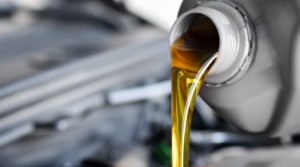I just got back from a road trip… and it was a good chance to get to know my wife’s new car.
What really amazed me was that after 10 hours on the highway, I wasn’t exhausted from the drive.
Sure, all the features, like built in Wi-Fi, navigation, satellite radio, phenomenal fuel economy, and all the other gadgets and amenities helped make the ride more enjoyable. But the main thing I noticed was how well it handled, how quiet it was, and how smooth it was at highway speeds.
That’s modern suspension for you. Clearly a lot of innovation and technology has gone into ‘road feel.’
Generally speaking, motorists don’t think too much about their vehicle’s suspension unless they have something else to compare it to.
My father has a 1956 Dodge pickup with front leaf springs, a solid drop axle and kingpins. I dare you to drive that for 10 hours at 130 km-h! That would be the opposite of a relaxing, comfortable drive. It would be an endurance test!
And we, as technicians, don’t give much thought to suspension components either… until we have to repair them, swap them out, or deal with a complaint.
But if you stop to consider the advances in ride control over the past century, you’d be pretty impressed with how far we’ve come.

Today’s suspension systems have to deal with all of the same principles and issues that engineers faced when vehicles were in their infancy. In the simplest terms, there are two things that the suspension has to deal with. First, and most importantly, it needs to keep the tires in contact with the road. And, secondly, it needs to do that while keeping the driver and passengers comfortable.
If this sounds simple, you’re not considering the multitude of factors that have a bearing on those two goals. Engineers have to make hundreds, if not thousands of decisions, and make innumerable strategic compromises to meet modern standards for road safety and passenger comfort.
We don’t all want to drive in a racecar that will turn a corner with no body roll but will also shake the fillings loose from your teeth when the tires hit a seam in the asphalt. On the flip side, most of us don’t want to be driving around in something that feels like a worn out chesterfield.
This is where the compromises begin.

When the engineers design a suspension for a vehicle, they start by asking a hundred questions. What kind of use will the vehicle have? How does it need to perform? Who’s going to drive it? What’s the price point going to be? What parts and components will it need? What are the vehicle safety targets? What are the expectations for noise and ride quality?
And, in recent years, they have to pay ever more attention to one key element: the unsprung weight of the vehicle.
What is the unsprung weight? It’s all the bits and pieces of the vehicle that aren’t directly supported by the springs. Springs can come in many forms – coil, torsion bar, leaf, airbag – and anything that is above them is what is called “sprung weight.” That’s an important consideration, and worthy of a discussion. But for now, let’s talk about the unsprung weight – the collective weight of the parts not directly held by the suspension.
The major components that constitute unsprung weight are the wheels, tires, brake assemblies, hubs, bearing assemblies, all the mounting fixtures (axles, knuckles, bolts, and sensors), and even the lug nuts.
To make things even more complicated, there’s a hybrid category of parts whose weight is shared between the sprung and unsprung systems. These include ball joints, control arms, trailing arms, CV drive shafts, shock-and-strut assemblies, and even the springs themselves.
Many of these parts have traditionally been made of cast iron or steel, and tended to be heavy. That era is behind us now.
 Modern fuel economy standards and emission legislation has forced carmakers to find new materials to reduce the overall weight of the vehicle. Reducing unsprung weight is of particular interest to engineers as they seek to meet increasingly demanding objectives.
Modern fuel economy standards and emission legislation has forced carmakers to find new materials to reduce the overall weight of the vehicle. Reducing unsprung weight is of particular interest to engineers as they seek to meet increasingly demanding objectives.
Taking away one kilogram of unsprung weight is comparable to reducing the overall vehicle weight by 8 kg. This decrease in weight plays an enormous factor in vehicle dynamics. The effect of less unsprung weight means that the vehicle’s suspension can control the wheel and, in turn, the tires’ contact patch more effectively, resulting in better traction and vehicle control.
This is one of the reasons the rear differential of a Corvette is attached to the chassis. That makes it part of the sprung weight. And it’s not just sports cars that employ this strategy. The Ford Explorer had gone to an independent rear suspension before its last remodel to improve ride quality.
A side effect of this reduction in weight is that the suspension can be made lighter, because the forces that it has to deal have been reduced. Think about it this way: if you swing a bowling ball with your arm and you try to slow its movement, it takes far more force than if you’re holding a baseball.
Reducing the weight of the braking system has been a key area of focus for automobile manufacturers.
Old cast-iron brake calipers have been replaced by ones made of lighter alloys that are just as strong as the old ones.

Brake rotors have gotten much lighter… and will get even lighter in the future. Cast iron rotors work well but they’re way too heavy. That’s why so many vehicles now come with a combination of aluminum alloy hats or centers and cast braking surfaces. They offer the same braking effect with less mass.
Going to the extreme end of the scale, you can now buy a factory street car with lightweight carbon ceramic rotors that reduce the vehicle weight by nearly 13 kg.
And remember, the brake assembly has to be attached somewhere. It could be a knuckle or an axle assembly. Well, this too is being lightened.
Again, the extensive use of alloys and composites materials is playing a huge part.
Magnesium, titanium, and beryllium alloys are being used for control arms, trailing arms, strut rods, tie rod ends, and steering knuckles, making these parts far lighter materials than the old cast-iron parts of even a decade ago.
Composite materials such as carbon fiber are now being used on some higher end vehicles. BMW is using carbon fiber trailing arms on some of its models, and will probably bring the technology to all of its line-up when manufacturing costs are reduced.
But brakes and attaching fixtures aren’t the only areas affected in the quest to lighten the unsprung weight. Tires will probably be next on the Weight Watchers scale.
The major tire manufacturers are trying very hard to reduce the weight of their tires without compromising durability or safety. Lighter materials (like Kevlar instead of steel), and lightweight bead bundles and belt packages are all being looked at. They’re also developing newer compounds that provide the same wear and tread life with less tread. Less tread equals less material and that makes them lighter. The general industry goal is to reduce the average tire’s weight by as much as 4 kg.

Manufacturers are also shaving weight off of wheels, resorting to lighter alloys rather than steel. They look better, yes, but that’s really just a side benefit. The true objective is to shed weight.
Need more examples?
The true MacPherson strut assembly reduces unsprung weight by eliminating the upper control arm.
And aluminum wheel nuts weigh less than traditional steel nuts.
Are the effects of weight loss that important? Yes.
The reduction of unsprung weight produces better ride control, vehicle stability, and improved component life. Let’s say the total weight of all the components in the right front corner of a vehicle tips the scales at 70 kg. When you hit a bump on the road, putting 2G’s worth of force into that assembly, that 70 kg becomes 140 kg that the shock or strut has to deal with. This shows that even a small reduction in weight can have a huge affect on the shocks or struts as they attempt to keep the tire in full contact with the road.
The manufacturers are reducing the unsprung weight of today’s modern vehicles everywhere they can… and these lighter assemblies give the driver more effective cornering, handling, braking, and improved road feel.
In addition, the wheels experience less severe movement and shuddering when they roll over bumps and potholed road surfaces.
The end result of all these changes is that you can now easily drive for long periods of time in greater comfort and safety, and with more control than ever before.
Jeff Taylor is senior tech at Eccles Auto Service in Dundas, Ont. You can reach him at jeff@ecclesautoservice.ca












Leave a Reply